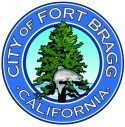Fort Bragg has a racist history
Background
Fort Bragg, was established in California by the Federal Government for the resettlement of California Indians. It was established in the spring of 1856, in the vicinity of modern Noyo. Its area was 25,000 acres (100 km2) and its boundary extended north from what is now Simpson Lane at 39°24′43″N 123°48′30″W to Abalobadiah Creek and east from the Pacific Ocean to a north–south line passing through the summit of Bald Hill.
Yuki, (Ukiah or Yokiah), Wappo, Pomo, Salan Pomo, Southern Pomo(Kianamaras or Gallinomero), Whilkut (Redwood) and others lived on this reservation. In 1864, following the end of the Bald Hills War, the Indians who resided on the reservation were moved to the Round Valley Indian Reservation.
White Slavers
Act for the Government and Protection of Indians (1850) – Passed by the legislature of California on April 22, 1850, this law allowed settlers to continue the Californian practice of capturing and using Native people as forced workers. It also provided the basis for the enslavement and trafficking in Native American Native labor, particularly that of young women and children, which was carried on as a legal business enterprise. Raids on villages were made to supply the demand, the young women and children were carried off to be sold, the men and remaining people often being killed. This practice did much to destroy Native tribes during the California Gold Rush. More…
There are eye witness reports about the slave trade in Indian children, marched down from the Mendocino Indian Reservation in units of 8, two children roped at the neck, side by side in rows of four, sold to ranchers and farmers for labor in the fields.
The Mendocino Indian Reservation was discontinued in March 1866 and the land opened for settlement three years later at the price of $1.25 an acre. This basic act of land dispossession and a forced march to another peoples land constitutes “genocidal acts to an indigenous population”
Many indigenous people walked back to the coast to try to live in their homeland again, assimilating into the culture of holding jobs and running businesses. They had to survive. Yet, I’ve seen pictures of Noyo Beach covered with redwood bark lean-tos, indigenous peoples living on the beach, eating from the rivers and ocean and living on the little land left to them. Today there are several bluffs west of the Coastal Trail that can only be visited as a tribe member or with permission of The Pomo. Thanks to the sensitivity of the City of Fort Bragg. by consulting with The Sherwood Valley Band of Pomo Indians and protecting their access to the Ocean.
Keeping the name Fort Bragg when the city was incorporated left this city as much a symbol of oppression and dominance as the prison camps at Auschwitz or any statue of a confederate general.
It’s the Fort, not the Bragg that offends
I understand how so many of the local populace feel as if their history and integrity is under attack. Their very identity is threatened, having represented their sports teams throughout the years with extreme pride, worked an honorable career in the local timber industry and raised their families here. It’s as if the whole world are pointing their fingers of shame at us and our town, standing accused as racists 150 years after the horrible atrocities have taken place. They had no idea who Braxton Bragg was and how him owning slaves related to present day issues
What we have is a diverse, multicultural and tolerant city that thinks of itself as having a progressive ideology. How could that be me? If you were to read the interpretive signs along the southern Coastal Trail you will find some referring to the genocide. A brave act by the City to acknowledge these acts happened.
How can the community show sensitivity to the land uses that affect the indigenous peoples? Does “Hack and Squirt” practices affect them disproportionately? Are their voices heard?
Change is hard to do
- Elk was known as Greenwood
- Mendocino was Meiggsville, Mendocino, Big River, Mendocino City
I support a name change for Fort Bragg, soon to have the designation, “Blank, The City formerly called Fort Bragg!” I estimate it will take 30 years to get the new name into common usage and many locals will refuse to use it. Asking the indigenous peoples participation in this choice is a gracious act of humility by the City Council.
<


